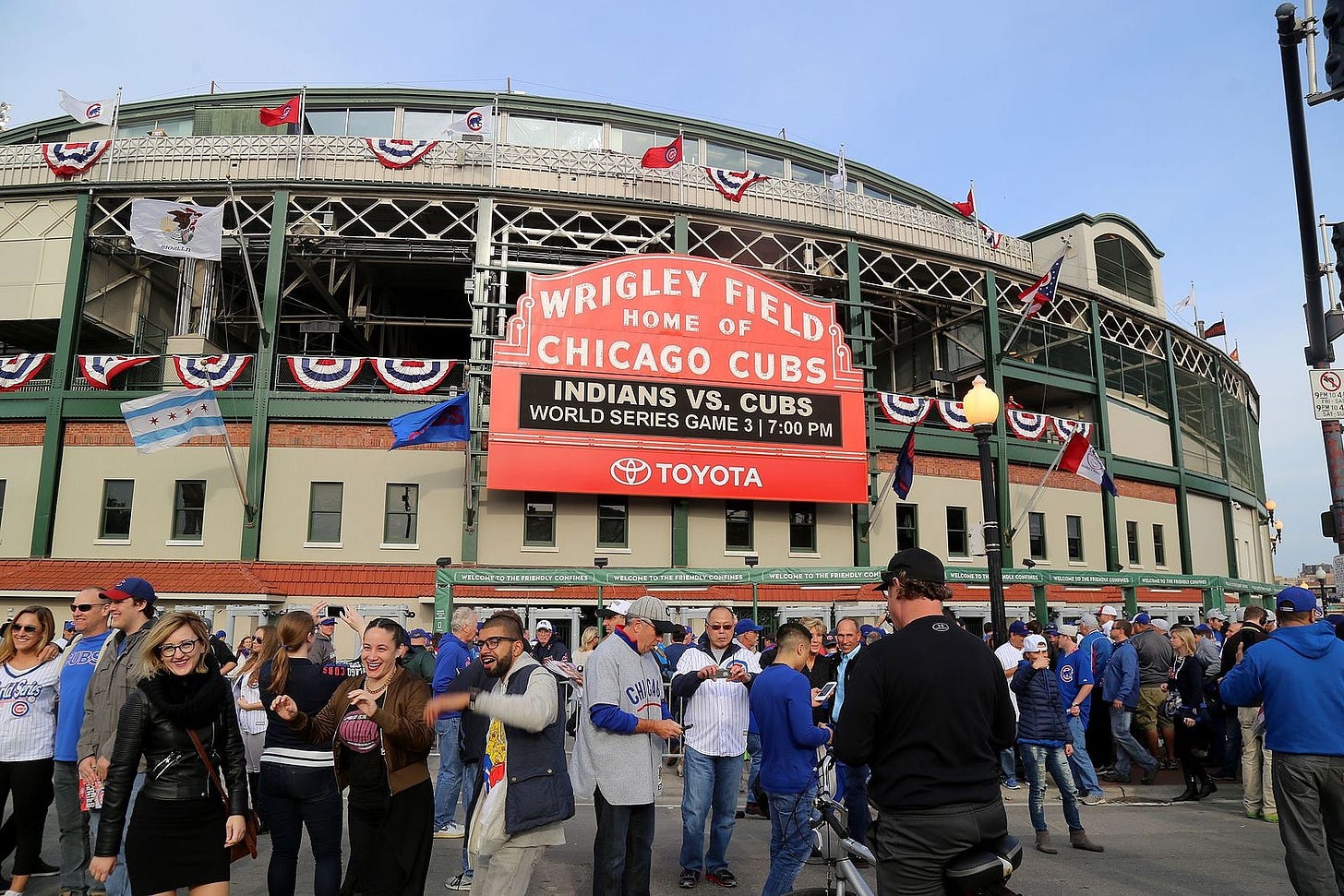Ranking the greenest ballparks
Which baseball stadiums best combine walkability, bikeability, and transit?

It’s my favorite time of the year: the beginning of baseball. And a week into the Major League Baseball season, I started thinking: What’s the greenest ballpark in the majors?
I’m not talking if a ballpark runs on renewable energy, recycles wastewater, or composts. These are all important features, but from a climate perspective, ballparks’ footprints are almost completely tied to transportation: Up to 80% of emissions from sporting events are generated from fans getting to and from the venue.
With this in mind, I came across several recent Axios articles that use a metric called Walk Score to rank each Major League Baseball’s 30 ballparks in terms of “walkability.” Because what better way to determine the “greenness” of a ballpark than walking, something that doesn't require burning fossil fuels!
According to these metrics, Petco Park in San Diego is the most walkable, while Kauffman Stadium in Kansas City is the least.
But the numbers only told part of the story: Several parks, like Miami’s loanDepot Park and Atlanta’s Truist Park, score pretty high in walkability but don’t really seem that green. That’s because Walk Score doesn’t account for connectivity to other neighborhoods.
In other words, a neighborhood may have many nearby amenities, but you still have to drive and park to get there, which kind of defeats the point.
A better way to determine a ballpark’s greeness would be to incorporate factors that account for low-carbon options to get to and from a ballpark. Fortunately, Walk Score also publishes Transit and Bike Scores. So I averaged the three Scores for all ballparks in the majors, and here’s what I got*:

In the end, my greenest ballparks aren’t only walkable but also link up with existing transit lines:
Boston’s Fenway Park and Toronto’s Rogers Centre are both surrounded by heavy-rail lines and bus stops.
Denver’s Coors Field is a short walk to Union Station, a hub for four light-rail lines; Minneapolis’s Target Field has a light-rail stop; and San Francisco’s Oracle Park is walking distance from light-, heavy-, and commuter rail lines.
Such transit connections are obviously easier to make when ballparks are built downtown. Unsurprisingly, nine of my top 10 “green ballparks” are located in the hearts of their cities (the exception being Yankee Stadium, which is in the Bronx) and, therefore, in dense, well-connected neighborhoods with infrastructure that already encourages walking, biking, and public transit (another reason why we love cities).
The ballparks that ranked near the bottom were almost exclusively in the suburbs or on cities’ edges, surrounded by seas of parking lots with little if any walkable infrastructure.
A quick story: Last summer in L.A., my buddy and I parked in a nearby neighborhood and tried to walk to Dodger Stadium, a move that was as dumb as it was dangerous: There were few sidewalks, and our walk after the game was largely without streetlights, two flagrant examples of neglected walkable infrastructure.
So aside from a reason to root for the Red Sox or the Blue Jays, what's the point of this exercise? The main thing is that sports venues are being built or renovated all the time, and many of these venues become huge carbon sources. But if they’re built or retrofitted with green transportation in mind, they don’t have to be.
Both the Athletics’ construction of its new Las Vegas ballpark and the Tampa Bay Rays’ search for a new park should prioritize transit, bikeability, and walkability — three major metrics that give the most bang for your buck when reducing emissions.
Doing so is not only good for the Planet and the brand (nearly 70% of voters say corporations and industry should do more on climate) but also for the pocketbook:
Nationals Park in Washington, D.C., helped transform Navy Yard from an underused industrial site to a thriving neighborhood packed with recreational, commercial, and residential space.
As millions of fans flock to ballgames this summer, ballparks can serve as models for the kind of compact, mixed-use neighborhoods that encourage green lifestyles. They show fans from all over the region what it’s like to be in a walkable, bikeable, and transit-oriented area.
I know that few people are going to ditch their cars altogether, but I can’t think of a better reason than a ballgame to try it, even if it’s only for a night.
*I didn’t include the Tampa Bay Rays, as the team is temporarily playing at a spring training facility with future ballpark plans in limbo.




Let's go O's! ⚾🐦⬛🧡 Need to increase the walkability score here in Baltimore, but was very happy to see green. Great read as always!
While Citizens Bank Park in Philly is in the Stadium Complex (across from the Philadelphia Eagles and Sixers/Flyers stadiums) and has one of the largest masses of parking lots around, it ALSO is at the end of a subway line AND has busses and the Indego Bike service (our Citi Bike) there as well. Plus there's massive sidewalks, so I think it's actually quite walkable and it should be ranked higher on the score list here. It's extraordinarily easy to take the subway to a game or even walk, both of which it's done way too many evenings/afternoons other my 20+ years in Philly.